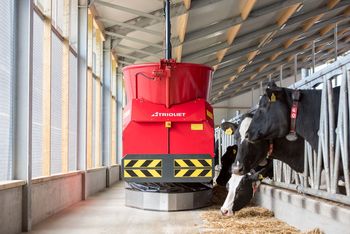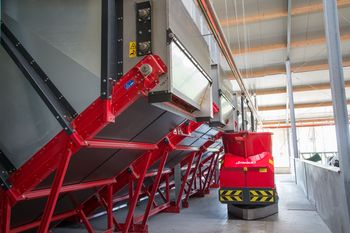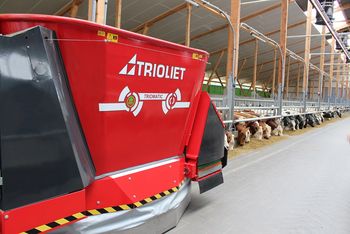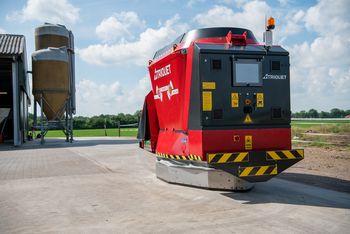Automatic feeding probably appears expensive at first glance, but when you look at the annual costs, it is actually cheaper than conventional feeding. What's more, this is before you even take account of the technical feedstuff aspects. Because if you look in detail at automated feeding, you will see that the long-term benefits are many times more than just the savings in labour.
Cows' health improve because of multiple feedings a day
Research among Triomatic users has shown that the cost savings can add up to as much as EUR 40,000. The savings come mainly from improved usage of feedstuffs, higher milk production with better content, reduced labour and lower energy costs. The Triomatic's energy consumption is approximately 10 kWh per day per 100 livestock units, which is still less than EUR 2 per day. But it is not only the business figures that improve, the cows' health also improves because they are being fed multiple per times per day.
Triomatic robot mixes small portions very well
Cows are animals with a very fixed biological clock, which is why it is important to feed cows at fixed times, as past scientific studies have already shown. The ration also needs to be consistent, every day and every feed. The Triomatic has a load precision of 1-2 kg per raw feed component. The two vertical cutting augers in the feeding robot can prepare very small, homogeneous mixtures for smaller groups; the minimum quantity is approximately 60 kg.
Thanks to the high feeding frequency and the freshness of the feed, the cows absorb more nutrients from the raw feed. This means that the number of kilos of concentrate per 100 kg milk can be reduced. On average, the feed efficiency in Western Europe is 1.2 to 1.3 (kg milk/kg DM). Triomatic customers have seen that the ration efficiency can rise to between 1.5 and 1.7. An increase in feed efficiency of 0.1 saves around EUR 150 per year in feed costs per head of livestock.
So automated feeding is not just a question of saving time (average work time with the Triomatic is 1.5 hours per 100 head of cattle per week), but it also has an impact on the cattle's health, their milk production, the feed costs and therefore the overall income of the dairy farm.
Read experiences of farmers View automatic feeding systems Ask a question



